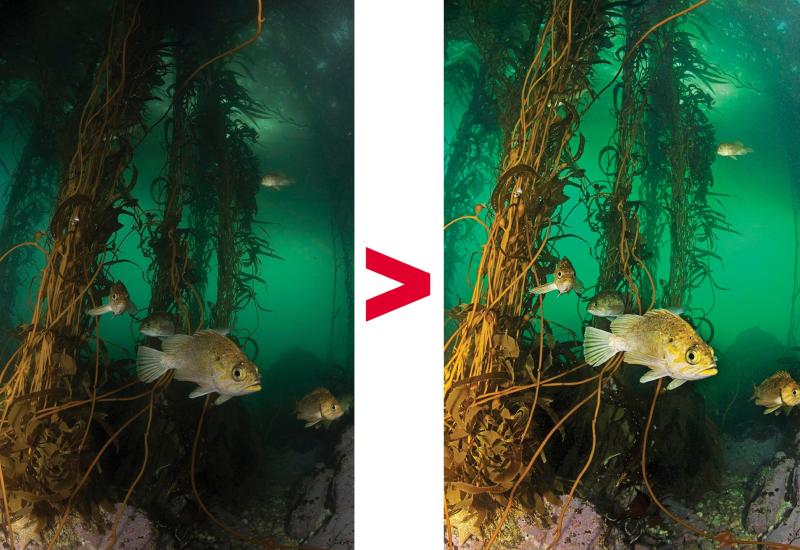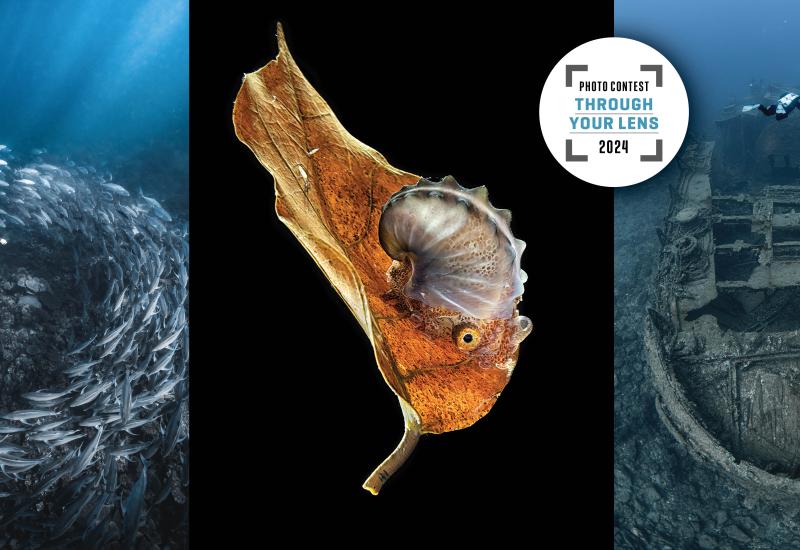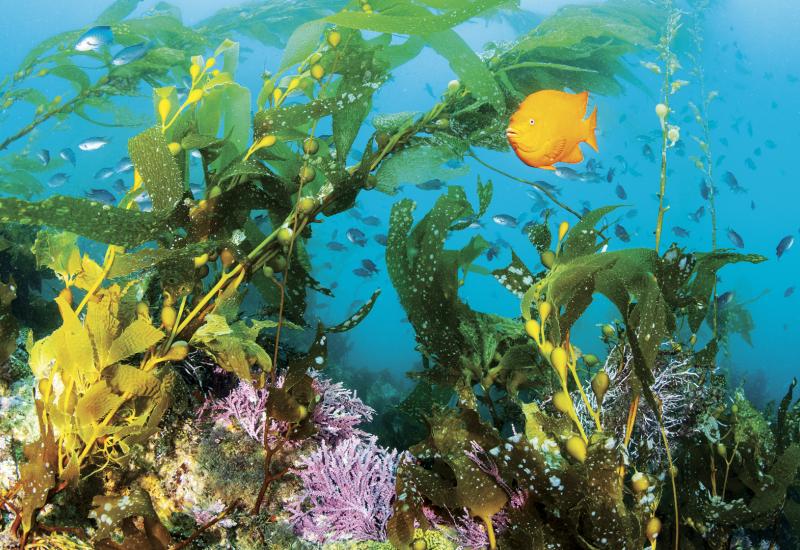When a “Scuba Drive” Doesn’t Sound Appealing, Do What This Diver Does
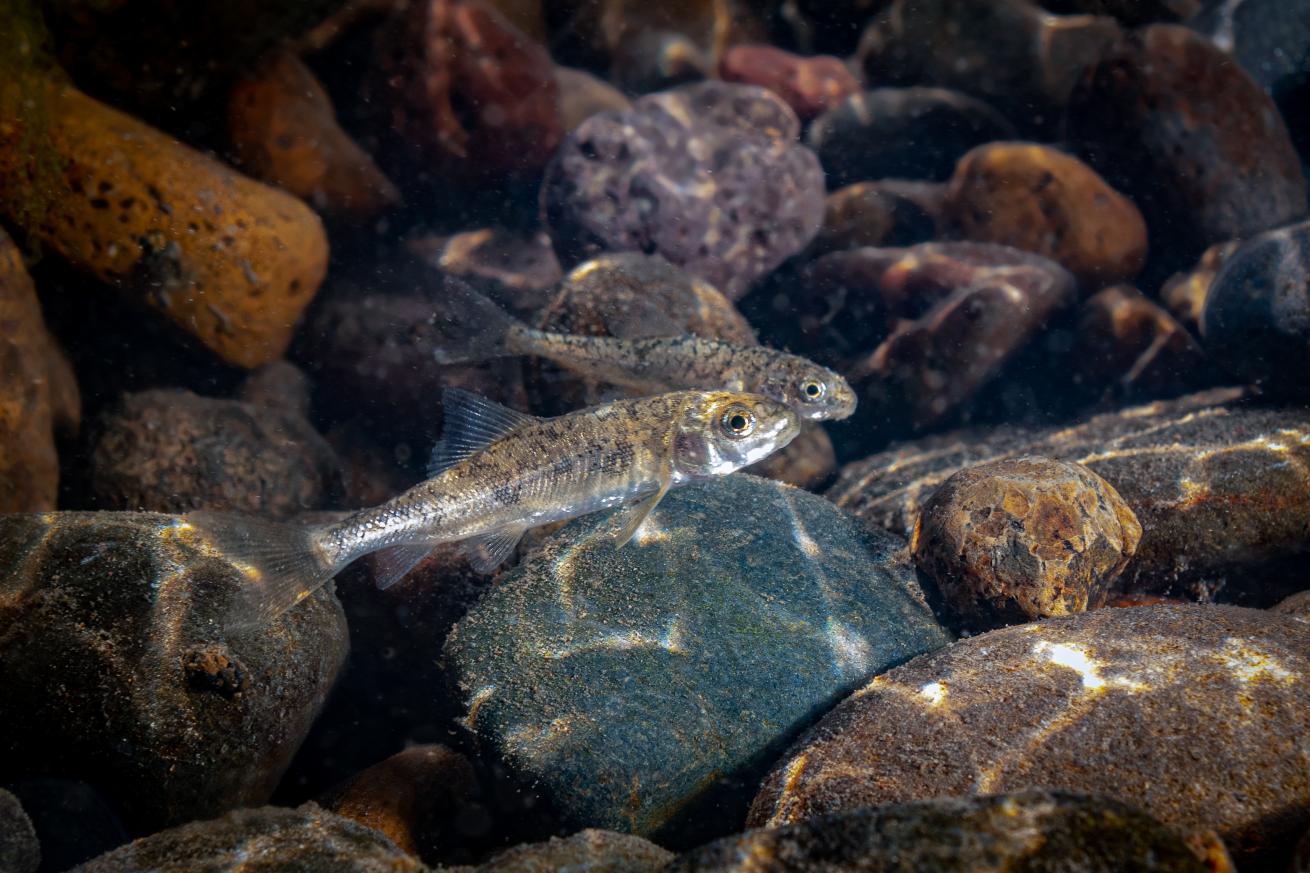
Laura TeslerTwo largescale sucker juveniles make the perfect models for river photography.
When people ask how I became interested in freshwater photography, I tell them I blame it all on plankton, the microscopic organisms that give the Pacific Northwest waters a kale-green hue in the summer. Although our nutrient-rich water is great for whales and other critters that dine on plankton, it’s terrible news for divers and underwater photographers, as it also means visibility will be limited.
When Salt Is Not Your Friend
My freshwater photography journey began on a hot summer day when the three-hour drive from landlocked Salem, Oregon, to the coast seemed a less than attractive option. After all, the ocean was likely packed with visibility-obscuring plankton. I thought of the beautiful rivers and streams closer to home. Why wasn’t I taking advantage of them?
That day, I discarded my drysuit, tanks, weights and heavy thermals. In their place, I packed my 5mm wetsuit, snorkel, fins, booties, mask and camera into the car and drove 10 minutes to the nearby Willamette River. I geared up and slipped into a spot where my family and I usually went swimming or kayaking.
As my mask dipped below the surface, a new world was revealed. Largescale suckers swimming in phalanx in the channel; introduced sunfish guarding their nests fearlessly in the shallows; juvenile salmon hiding in the aquatic weeds; big smallmouth bass coming out from behind logs to look the strange invader over before sliding back into their den; and crayfish waving their huge claws at me to warn me away from their gravel patch. From this point on, I became addicted to summer freshwater snorkeling.
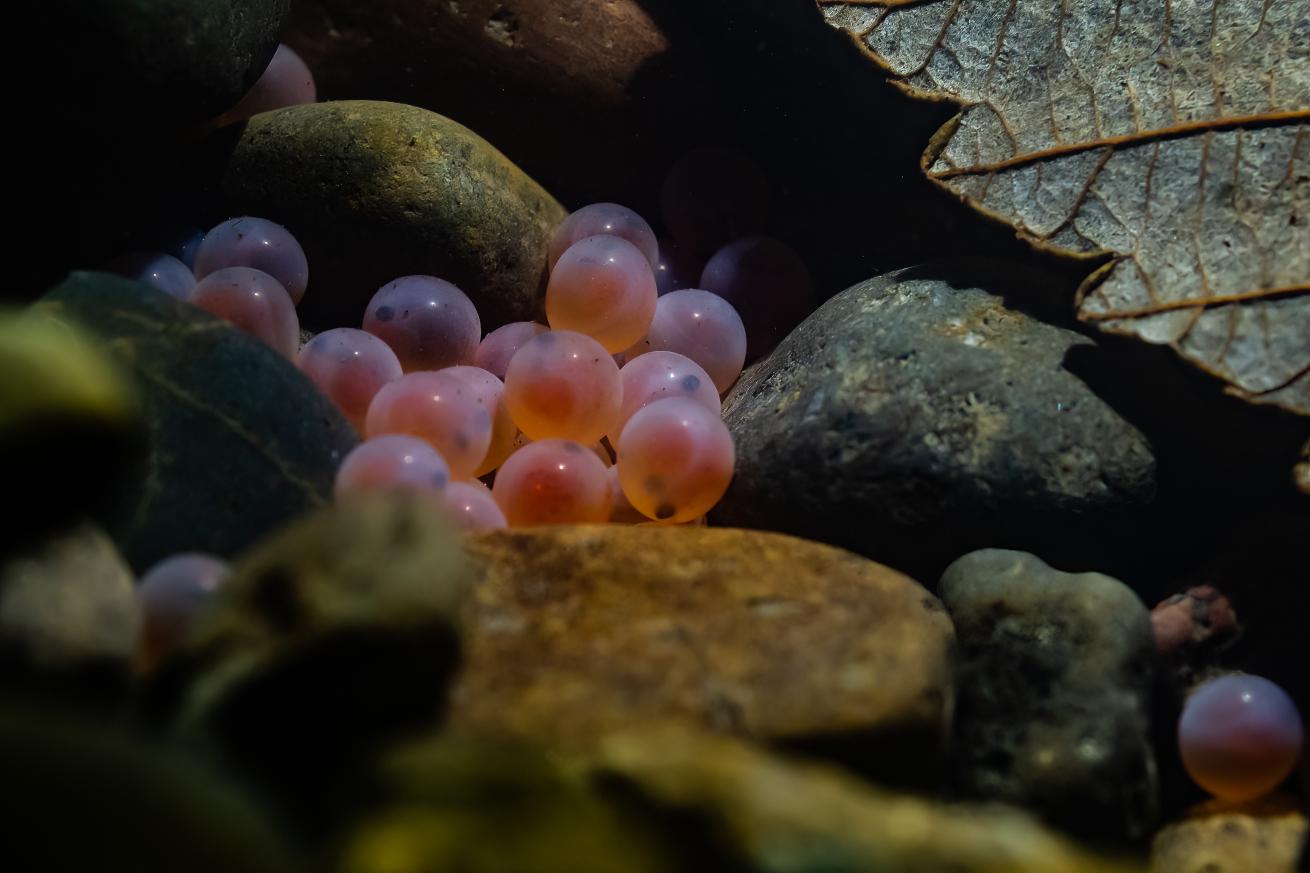
Laura TeslerTrout eggs looking like pink marbles among rocks in the river.
What’s in It for a Photographer?
One of the best things about freshwater photography is that it is a relatively low-cost way to build your underwater photography or videography skills, especially if you’re landlocked. You won’t need an expensive flight to the Caribbean. You won’t need a boat to get to the dive site, and freshwater will do less damage to your gear.
Better yet, if you don’t have an expensive camera, a GoPro or even your phone in underwater housing will serve you just as well.
That said, it’s also a perfect activity for advanced underwater photographers with a DSLR camera and a beefy underwater housing rig. You can get relatively good results with low investment. Ambient light will figure prominently in freshwater photography, so if you don’t have the budget for strobes, no worries.
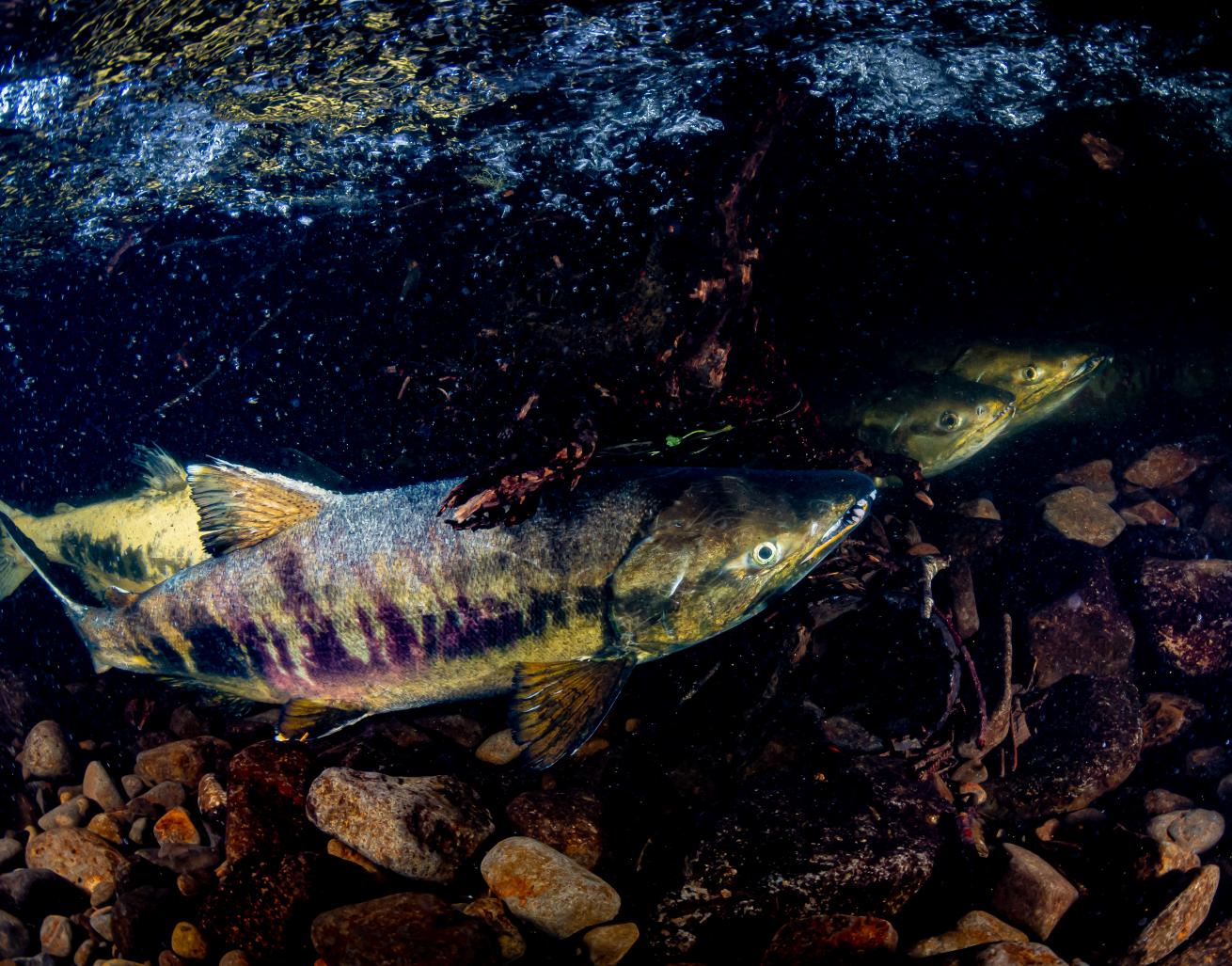
Laura TeslerChum salmon are a popular subject to capture in freshwater photography.
Staying Safe When Snorkeling Rivers
Diving in freshwater environments takes planning and reconnaissance. Rivers, lakes, and streams come in all sizes and shapes, and they all have hazards that must be carefully studied and observed. Over the course of my career as a fisheries biologist, I learned to conduct stream and spawning surveys, an activity that entails either walking or snorkeling upstream, counting various species of fish. This experience taught me to identify juvenile and adult fish (in my part of the country largely trout and salmon) and watch for dangerous hazards.
Most of the time, the photographer in freshwater situations is snorkeling, not diving, as diving is not practical due to the shallow depth of most streams—unless, of course, you are diving deep pools in rivers. Also, to get to areas with good concentrations of fish, you often hike upstream and climb over large logs and boulders and other debris, so carrying a heavy tank and other equipment is not practical as you are already taking all your camera gear in a pack.
It is essential to be aware of currents and hazards known as “strainers”—downed trees that are underwater, and that can entangle an unaware snorkeler and cause drowning. Often one can only see the top of a strainer at the surface; part of the reason they are dangerous as you get entangled in them when the current pushes you into the branches submerged below. As fish often like to congregate around the branches of strainers, care must be taken when exploring potential subjects.
Snorkeling in urban streams, one can also encounter sharp objects that can puncture your wetsuit or drysuit; an updated tetanus shot is a good idea. Falling on slippery rocks is a definite hazard; care must be taken with fragile equipment. I would recommend using an acrylic dome, not a glass one, as scratches are inevitable in floating, high-current situations, and you can buff scratches out of acrylic domes. With glass, this is not possible.
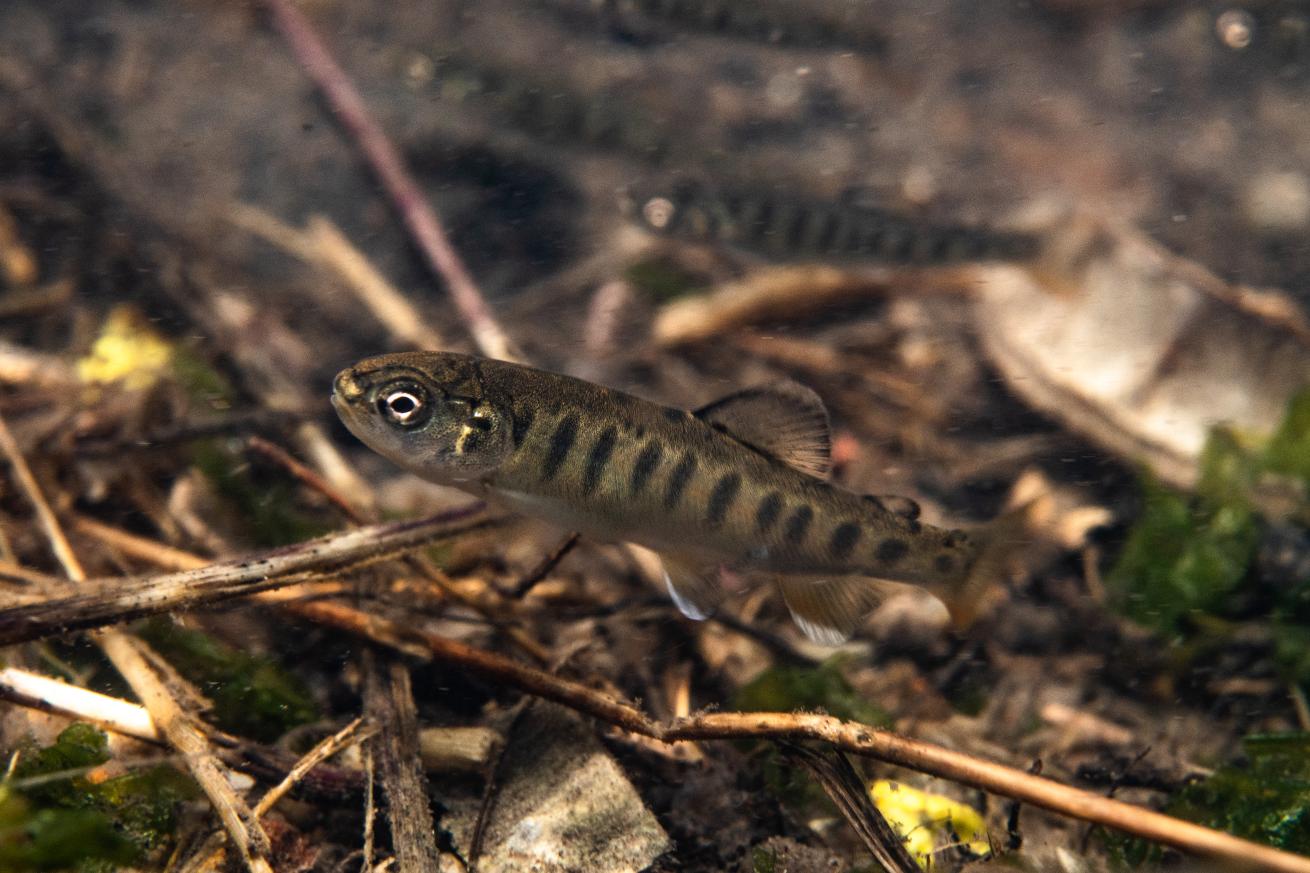
Laura TeslerDon’t forget the little ones, like this redband trout fry.
The Brave New World of Freshwater
Freshwater photography is also rewarding for the diversity of organisms you can encounter, the first being fish! Native fish are as showy as their coral reef marine counterparts. In the Pacific Northwest, I get to witness the seasonal runs of pacific salmon and steelhead salmon underwater, plus I follow up shooting the juveniles in the summer.
There are also many types of freshwater mussels, lamprey and clams that are begging for good macro photography. You might even help citizen science projects by sharing pictures of your photographs or the underwater environment as it changes over time. Macroinvertebrate life, such as caddisflies and stoneflies, also makes for beautiful portraits both in the water and out, and the lucky photographer might even get a fish feeding on one.
In recent years, many prize-winning nature photographs have featured frogs and turtles, some even from Scuba Diving magazine’s own photo contest. Although you’re more likely to find frogs and turtles in still water environments, you still have to work on honing your skill to approach with stealth and to get good pictures that capture unique facets of an animal’s behavior. The effort is absolutely worth the return on investment.
Make sure to do your research so that you do not inadvertently cause damage to spawning beds or harass spawning fish in your quest for pictures. Any local office of your state fish and wildlife agency should be able to help you out with a distribution map so you can avoid these sensitive areas. Remembering property boundaries is important so that you do not inadvertently trespass on private property. Have fun and explore a whole new side of underwater photography!

